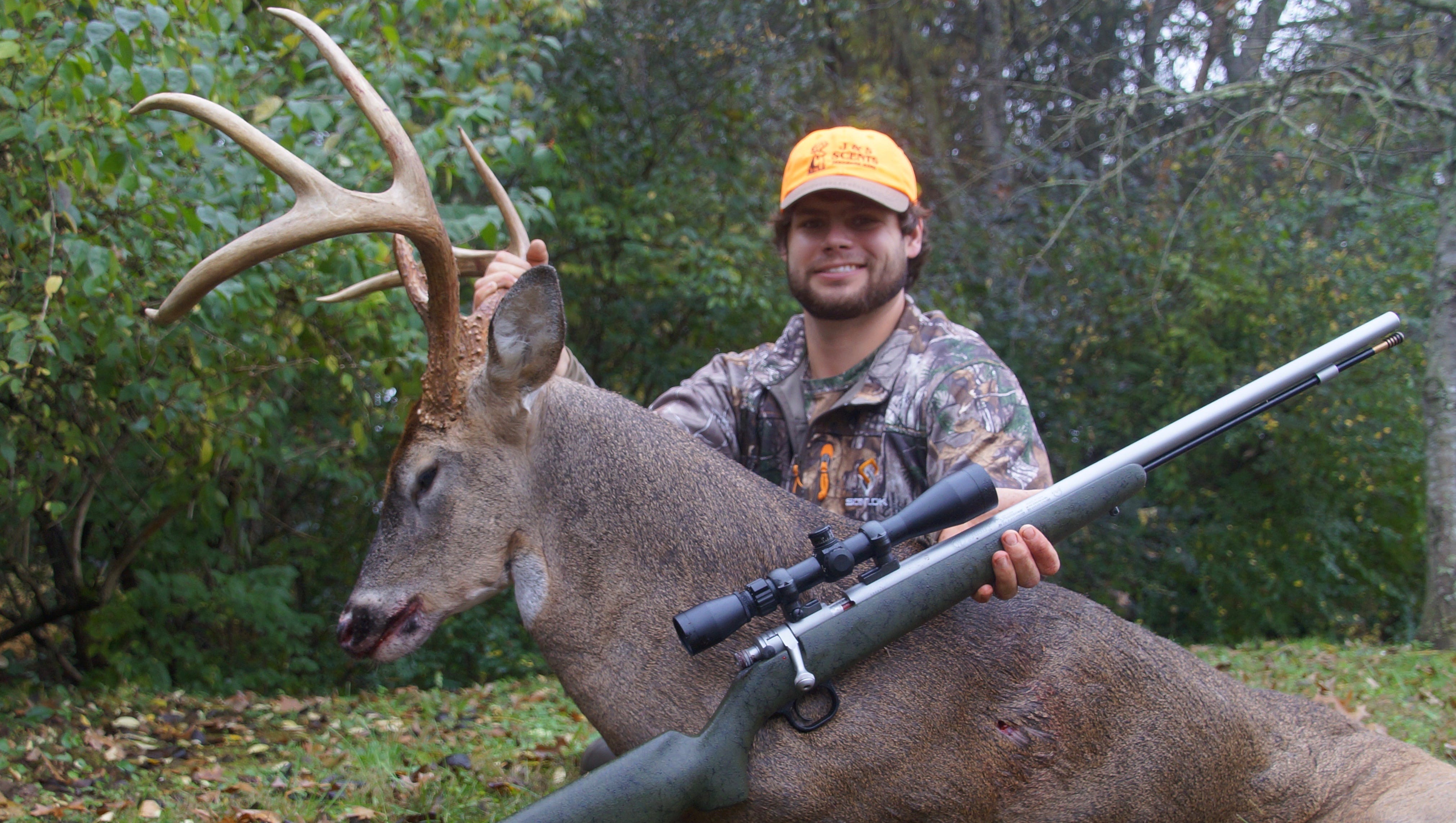

of Fish and Game Commissioner George Peterson said last week. Therefore, beginning with the 2017 deer seasons, hunters must continue to check deer at a check station during the first week of the shotgun season so biological sampling can be conducted, but starting this fall, they’ll have the option of checking deer online during the second week of that season, Mass. Checking a deer at a station during the second week achieves the same result as checking it online, just as hunters have the option of doing during the archery and muzzle loader seasons. However, biological data actually is only collected at check stations during the first week of shotgun season and is not collected during the second week. Regulations currently require hunters to physically check their deer at an official deer check station during the two weeks of shotgun season because biological data is collected from the deer during that period to determine the health of the herd.

While he hasn’t announced any plans for the antlers, he said the deer itself was processed for foodĪ much-needed revision to the Massachusetts deer-checking regulations is scheduled to be in place by this fall. Tucker said he shot the deer from about 40 yards away on a farm his family has leased for 40 years. Tucker’s deer weighed about 150 pounds and was estimated to be 3½ years old. “To be honest, I was waiting for this (score) before I put a lot of thought into it - I don’t have any specific plans for it at this point,” Tucker told The Tennessean. Since the official scoring has been made public the new record rack has been valued at more than $100,000 and Tucker hasn’t announced any plans for it. The B & C holds its awards banquets every three years with its 29th banquet held last year. While the score of Tucker’s buck now is official, the world record title for a deer killed by a hunter still is pending official certification, which won’t be formally announced until the 30th B & C Big Game Awards Banquet in 2019. Along with setting the new world record, the TWRA also declared Tucker’s buck a new Tennessee state record as well, dwarfing the previous state record whitetail of 244-3/8 inches set in 2000. The rack was scored at the Tennessee Wildlife Resources Agency (TWRA) where it took nearly four hours to complete. A non-typical rack is asymmetrical and does not have the same number of points on each side like a typical rack. Abnormal point lengths are added into the final net score for non-typical whitetails. They are all added up for a gross score.ĭifferences in symmetry and abnormal point lengths are deducted from the gross score on typical racks to arrive at a final net score. Measurements include tine lengths, main beam lengths, spread from tip to tip, inside spread, greatest spread, and four circumferences of the antler’s main beams between points.
World record deer 2017 series#
Tucker’s new non-typical record sports nearly 100 inches more antler than that typical world record.ī & C bases its scoring system on a series of measurements that include mass and length (and also symmetry for typical racks) that basically determine the number of inches of antler the deer grew. The world record typical whitetail stands at 213-5/8 inches, a tremendous 14-pointer taken in Saskatchewan in 1993. That deer was a non-typical 38-pointer taken by a 15-year old in Iowa in 2003. Tucker’s buck broke the current world record holder of 307-5/8 inches. That period ended Monday, and four Boone and Crocket (B & C) judges gave the antlers an official score of 312-3/8 inches, making it the whitetail deer with the biggest antlers - typical or non-typical - ever shot by a hunter. Gallatin resident Stephen Tucker, 27, shot the non-typical 47-point buck with his muzzleloader back in November, but a 60-day drying period had to take place before officially scoring the antlers. It’s official, there’s a new world record whitetail buck and it comes from Sumner County, Tennessee, according to Wednesday’s report from The Outdoor Hub.


 0 kommentar(er)
0 kommentar(er)
